After 1975
“The Common Place of Law” in the “Uncommon” World of Vietnamese Immigrants: The Vietnam War Refought in Massachusetts
Published on
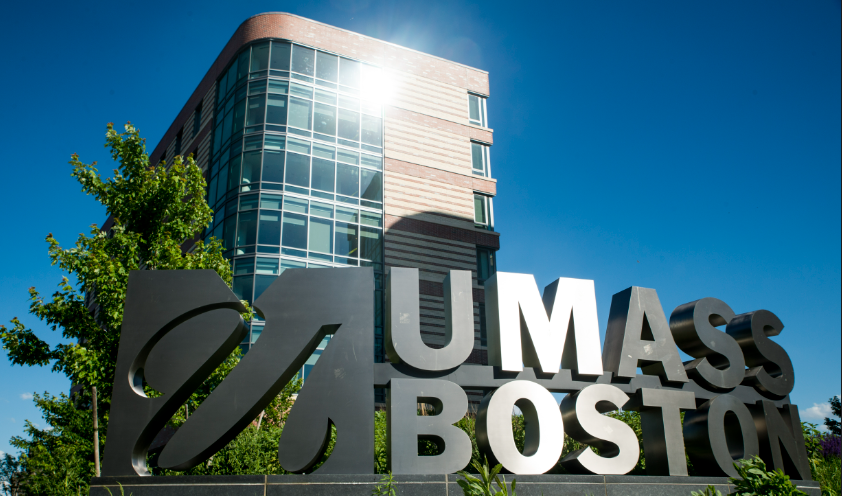
Editor’s Note: The William Joiner Institute for the Study of War and Social Consequences, formerly known as the Joiner Center, was involved in a legal dispute in 2001 following a lawsuit filed by a group of Vietnamese Americans The group, all aged over 40, alleged discriminatory practices in the awarding of fellowships, specifically targeting procedures within the Center such as its advertising and selection processes, which they claimed were designed to deliberately exclude Vietnamese-Americans within their age demographic. The lawsuit articulated three central contentions: first, the assertion of direct discrimination by the Center against them based on age and ethnicity; second, the argument that even if unintended, these exclusionary practices had a discernible discriminatory impact on their particular group; and finally, the assertion that such actions infringed upon their educational rights as protected by Massachusetts law. The court ultimately declined the request to classify the case as a class action, thereby confining its purview to the individual applicants involved. As such, the named plaintiffs could not represent all qualified Vietnamese Americans similarly harmed in their failure to receive University notices in order to apply for these fellowships. The Massachusetts court dismissed the lawsuit based on procedural grounds, without a trial on the merit. Therefore, the details regarding the substantive outcomes of the applicants’ legal action remain unresolved and, therefore, undisclosed to the public. Since then, the William Joiner Institute, inheriting the legacy of the Joiner Center, has maintained a steadfast dedication to exploring the effects of war on individuals and society, with a specific focus on supporting veterans. Its mission encompasses the undertaking of research on both historical and contemporary repercussions of war, facilitating objective discussions concerning the impacts of warfare, advocating for policies conducive to the well-being of veterans and their families, and furnishing educational materials pertaining to war and its societal ramifications.Additionally, the Institute endeavors to enhance the overall quality of life for veterans, addressing facets such as their physical and mental health, educational pursuits, and employment opportunities. In alignment with its broader societal objectives, the Institute also endeavors to raise awareness regarding the human costs of war and advocates for peaceful conflict resolution. Updated: 3/13/24
“By an unexpected turn of our history,
a bit of the truth, an insignificant part of the whole,
was allowed out in the open.
But those same hands which once screwed tight our handcuffs
now hold out their palms in reconciliation:
”No, don’t! Don’t dig up the past!
Dwell on the past and you’ll lose an eye.”
But the proverb goes on to say,
“Forget the past and you’ll lose both eyes.”
Decades go by, and the scars and sores of the past
are healing over for good.
And someday in the future, this Archipelago,
its air, and the bones of its inhabitants,
frozen in a lens of ice,
will be discovered by our descendants like
some improbable salamander.”
Aleksandr I. Solzhensitsyn (1918-2008)
I. INTRODUCTION:
April 30, 2025 will be the 50th anniversary of the end of the Vietnam War.
In 2015, Rory Kennedy’s documentary film on the fall of Saigon in 1975 received an Oscar nomination.
In 2016, the Pulitzer Board gave its literature award to Viet Thanh Nguyen for his debut novel allegedly known as the “Vietnam War novel,” followed by a McArthur Foundation grant to the novelist’s literary diaspora project, an online publication of Vietnamese American work. This project, however, generally rejects creative work on the post-war sufferings of Vietnamese immigrants, historical themes such as Boat People and gulag survivors.
Regardless, the interest in the Vietnam War as part of U.S. history will continue. There is also the resettlement history of Vietnamese immigrants in America. This article rejuvenates an old lawsuit filed in Massachusetts to reiterate the need for examining the history of Vietnamese immigrants by way of courtroom chronicles, obviously a means beyond an award-winning novel and a documentary film.
In 2000, a legal dispute arose in the heart of Boston, in connection with the University of Massachusetts’ Vietnam research programs (the “Massachusetts Lawsuit”). A group of Vietnamese Americans filed a lawsuit against the “William Joiner Center (“WJC”) for the Study of War and Social Consequences,” an academic unit of the University of Massachusetts-Boston (the “University”).(1)
The lawsuit alleged violations of Massachusetts’ anti-discrimination law.(2) The Vietnamese American Plaintiffs challenged the University’s selection of scholars for a Rockefeller Foundation-funded fellowship, contending that the University had excluded qualified first-generation Vietnamese Americans from participation in a research project called “Re-Constructing Identity and Place in the Vietnamese Diaspora” conducted by the WJC (The “WJC Project”) .
The Plaintiffs, all in retirement age, were political refugees who escaped communist Vietnam during the 70s, 80s, and early 90s. Among the Plaintiffs were
(i) the former South Vietnamese ambassador to United States,
(ii) the Chancellor of a Buddhist University in South Vietnam,
(iii) a former South Vietnamese lawyer, and
(iii ) several South Vietnamese military personnel who were sent to “gulags” by the North Vietnamese at the fall of Saigon in 1975 (the end of the Vietnam War).(3)
These Plaintiffs also sought to become class representatives for all Vietnamese Americans similarly situated. The trial court denied their motion for class certification. The lawsuit was ultimately dismissed on procedural grounds and for failure to state a cause of action for age discrimination. Subsequent appeals were also dismissed.
This Article reiterates the thesis that lawsuits are not only means to resolve individual disputes or to protect the public interest in private controversies, but the courtroom can also be used strategically by litigants to provide chronicles of history. The Massachusetts lawsuit, although unsuccessful for the plaintiffs, could be considered as such a means for Vietnamese immigrants to write their history – why they were in America.
Legal procedural obstacles, however, prevented the Massachusetts Lawsuit from effectively serving as the avenue for the selected Plaintiffs to tell the story of first-generation Vietnamese refugees, and to instigate a reassessment of the Vietnam War in a formal fact-finding forum.
This Article analyzes the unusual Massachusetts Lawsuit from a non-legal perspective, and explains how a segment of the Vietnamese Diaspora wanted to utilize the U.S. legal system to present their side of the ideological battle, in court, the same way post-World War II criminal international tribunals were used to enforce international human rights.
Decades after it was dismissed, in my view, this old lawsuit can also be revisited as a means to evaluate any possibility of “reconciliation” of the ideological conflicts among ethnic Vietnamese now separated by the Pacific Ocean.
II. BACKGROUND:
1) The End of the Vietnam War and the Infamous Gulag. One year after the war ended, in 1976, the Vietnamese Communist Party reunited the two Vietnam‘s into what is known today as the Socialist Republic of Vietnam (“Vietnam”) .
Immediately following the Communist takeover in 1975, the new government of Vietnam implemented a policy to imprison certain South Vietnamese and political dissidents in “re-education camps” without a trial or due process. Based on witness accounts, South Vietnamese were told that they were to gather at a place for “educational sessions,” only for a short time period. Yet, it is now common knowledge among the Vietnamese American community (and U.S. officials) that “re-education camps” were just a euphemism for the Vietnamese equivalent of the Soviet Union‘s gulag archipelago–forced labor camps set up for the imprisonment of those who are deemed guilty of “crimes against the people” by the Communist government.
In Vietnam, these “gulags” were used to imprison collaborators and local employees of the United States and the defunct South Vietnamese regime after the fall of Saigon in 1975. Prisoners also included non-military personnel: writers, artists, educators, civil servants, priests and monks – anyone identified as “bad elements” guilty of “crimes against the people.” The prisoners also included elderlies and women. They were forced to perform hard labor without sufficient food or medical care or a fixed release date. Many died in those camps. Others were shot while trying to escape. Vietnam‘s “reeducation” policy allegedly continued until the early 1990s, when the Reagan Administration initiated immigration programs to bring South Vietnamese political prisoners to America.(Little official data were available to the West to ascertain whether these “camps,” or remnants of them, still exist today for certain segments of society, or exactly when they were abolished.)
From the mid-1970s to the 1990s, many Vietnamese escaped the new regime, including fleeing at sea, or they immigrated to America as former political prisoners under humanitarian and family reunion programs sponsored by the United States. Most notably tragic was the exodus of “Boat People” from Vietnam–they either lost their lives at sea, encountered pirates, stranded on deserted islands, or crowded Southeast Asian refugee camps, posing an issue of conscience for the world. The flow of refugees dwindled down in the late 1980s, as British Minister Margaret Thatcher repatriated “Boat People” from Hong Kong back to Vietnam, and after Vietnam opened itself to the West under a “Renovation” policy (Đổi Mới”) to implement a market economy under the ruling of a single-party state, modeled after China. In other words, “Renovation” combined a free market economy with a single-party Marxist political system. Personal and financial freedom for the Vietnamese people improved as a result of free market, while human rights issues have remained sensitive for decades, due to differences in ideologies.
In 1996, diplomatic relations between Vietnam and the U.S. were normalized, and the first U.S. ambassador to Vietnam, a former fighter pilot who participated in the war, was appointed. It can be said that in terms of government relations, the U.S. and today’s Vietnam have generally become ‘friends” diplomatically, but that does not mean post-war ideological differences or old wounds among Vietnamese have been “reconciled,” as that term has been used in other historical post-war conflicts around the world.
2) The Massachusetts Lawsuit. This lawsuit was generated because the University of Massachusetts at Amherst gave funding to scholars from Marxist Vietnam to study the “Diaspora” in the United States, basically a community of political refugees. Many of the Plaintiffs were dignitaries and former officials of the defunct South Vietnam. Among them were political dissidents imprisoned in the Vietnamese gulags. Having settled in America, they were part of the Vietnamese American community, or what is known around the world as the U.S. segment of the Vietnamese Diaspora. Needless to say, each Plaintiff had his own story to tell. These tales went back to the time of the Vietnam War, as well as what happened behind the new Vietnam‘s iron curtain after the war ended (1975-1985).
In the Superior Court of Massachusetts in Suffolk County, these Plaintiffs claimed that the University illegally discriminated against them because they were anti-communist first-generation Vietnamese Americans over 40 years of age. Implicit in their legal claims was their assertion that they were more qualified and more suitable to research the Vietnamese Diaspora than candidates from Communist Vietnam as selected by the University. To the Plaintiff, the University insulted them and misstated their history by turning the study of the Diaspora to Vietnamese communists. The Plaintiffs‘ supporters told their community that by selecting alleged “scholars” from Communist Vietnam to study the Vietnamese Diaspora, the University had opened old wounds, thereby revitalizing a two-decade war that had haunted the conscience of America. The Plaintiffs analogized themselves to victims of the Holocaust–one should not allow Nazi members to study the Jewish community in the United States. By favoring Communist Vietnam over qualified candidates here, the University had mis-described the Vietnamese Diaspora, and had shocked the conscience of the world, such that the Plaintiffs (older first-generation of the Diaspora) had to stand up in a court of law to tell their stories of how their human rights were violated by Communist Vietnam. In their view, it was actually the same day in Court as the survivors of the Holocaust and Cambodia’s “Killing Fields.” These atrocities were tried before international tribunals, but the heartbreaking stories of South Vietnamese had never been heard before any such international adjudication.
These old and feeble plaintiffs wanted their day in court in Massachusetts.
On August 27, 2004, the year prior to the 30th anniversary of Vietnamese resettlement in America and three years after the complaint was filed, the presiding judge dismissed the Plaintiffs‘ case for want of subject matter jurisdiction, in the sense that the Plaintiff had not pleaded sufficient elements to prove age discrimination. The Plaintiffs appealed the dismissal order to the next court level, but their appeal was dismissed. There was no further appeal to the highest court of the land (a process called “a certiorari”). The old and feeble plaintiffs became too tired and penniless to continue their fight.
Despite its notoriety within the Vietnamese American community at the time, the lawsuit has remained obscure and minuscule in the public domain, and hardly caught the attention of mainstream legal scholars or sociologists (although it did raise an interesting question regarding the interpretation of Massachusetts’ anti-discrimination law).
III. AN ACADEMIC MOVEMENT AND NEW DOCTRINAL THEORY TO REEXAMINE THE ROLE OF THE COURTROOM IN AMERICAN SOCIETY:
In sum, in terms of the Plaintiffs’ deeper purpose, the real meaning behind the Massachusetts court’s dismissal of the lawsuit was that the Plaintiffs had failed to secure their day in court to present and preserve their own history. Their voice, therefore, could only be heard via the media’s publicity surrounding the lawsuit, in the local vicinity. Apparently, the Superior Court of Massachusetts did not see itself as the equivalent of an “international criminal tribunal” that can or should address past human rights atrocities or war crimes. Further, under principles of academic freedom, the University could prefer hiring researchers from Communist Vietnam to study the Vietnamese Diaspora, over the aging former political prisoners in the Diaspora itself, no matter how shockingly offensive such University action might seem to many members of the Diaspora.
Yet, by the end of the 20th century and before the new millennium, a different doctrine has emerged from the academic literature of the U.S. I explain this doctrinal theory below, in order to demonstrate the importance of the Massachusetts Lawsuit. (By virtue of the appeal dismissal, this lawsuit is no longer a “case and controversy” under the law, and the Plaintiffs had exhausted their means, health, or financial ability to appeal further to the U.S. Supreme Court.)
The foundation for this line of academic research was in fact built on previous works by pioneering scholars in the “Law and Society” movement, as well as in other interdisciplinary studies within the social sciences, linking law to sociology and history.(4)
The sociological theory discussed below shows that by turning to Massachusetts anti-discrimination laws as their platform from which to speak, perhaps strategically the Plaintiffs and their lawyers had failed their ultimate intended purpose of using the American courtroom to write (or rewrite) history, as a form of public-interest litigation. In other words, the deciding judges in Massachusetts only needed to decide whether the University had discriminated against Plaintiff on the basis of their “age” or “creed.” These state judges chose not to review the University’s academic choices of preferring Vietnamese from communist Vietnam to study the Diaspora (as opposed to members of the Diaspora itself). Perhaps the Plaintiffs might have achieved their intended purpose by seeking other types of administrative or educational funding law theories that might have been available to challengers of University decisions. Perhaps the battle should have been fought in the realm of public opinion, as well as before the national and international media, rather than just before the state judges who presided over the lawsuit.
1) The “Legal Consciousness” Movement and the “Common Place” of Law in America. In 1998, the University of Chicago published a book titled “The Common Place of Law,” authored by two sociologists, Patricia Ewick and Susan Silbey.(5) These scholars interviewed “regular people” in “common places” of America in order to study the use of law in everyday American life. Based on these empirical interviews, the authors surmised that Americans sometimes see themselves as before the law whereupon they are applicants, sometimes with the law whereupon they describe themselves as players, and sometimes against the law whereupon they become resisters.14
The “before,” “with,” and “against” the law categorization represents three variations of “legal consciousness.” Inequality in access and inequity in the distribution of resources cause some groups to be better equipped as players who are “with the law,” and, hence, perhaps are less likely to see law as too “remote” to them.
The Ewick and Silbey study confirms that although legal consciousness may vary (many times according to demographic factors), at least in the U.S. “rule-of- law” system, overall the law is arguably “always there ” in the American mindset.(6)
However, just because law “is always there,” it is not “always important” for practical reasons.(7)
Adding a “salient perspective” to the premise that “law matters” in America, and using the Ewick and Silbey study as springboard, at least two other scholars, Kay Levine and Virginia Mellema, studied the marginal lives of women in drug communities and reminded us to be sensitive to the variety of ways in which people with few resources manage to navigate multiple and often contradictory regulatory systems in order to survive.(8) In the struggle for survival, law does not always matter. Sadly, such is still the reality of 21st Century’s America.
Scholars such as Levine and Mellema criticized the Ewick and Silbey study as presumably assigning a “primacy” position to the law in the common people‘s “legal consciousness,” taking on a “law-first” perspective, which may not exist for those groups living outside the mainstream culture such as the homeless, the “welfare poor,” or drug communities. In these marginal communities, law may not matter at all, and people’s behaviors are motivated and influenced by non-law factors necessitated by their needs to negotiate and adjust, all for the sake of daily survival. These later studies render evidence to the common-sense notion that even in an affluent rule-of-law society like America, for persons living in extreme poverty, without homes or jobs, the law is much more “remote” than other more imposing and pressing societal structures that may, or may not show themselves to the “outside world.”
But even the scholars who advance this “salient perspective” recognize that in America, “remoteness” does not always mean a complete “absence” of “legal consciousness.”(9) In that sense, the concept of America as a pioneering democratic ‘rule-of-law” society remains intact, compared to other oppressive political systems around the world.
2) The “Uncommon” Place of First-Generation Vietnamese Political Immigrants in the U.S. Just like those poor women of America’s drug communities selected for the “salient perspective” study by Kay Levine and Virginia Mellema, law must also seem equally remote to first-generation Vietnamese political immigrants who came to America in their mid-lives, disadvantaged by their lack of linguistic and cultural facilities, and already psychologically scarred by the bad experience of having endured and survived atrocities in their home country. (Such “emotional baggage” was indeed their invaluable “luggage” to America – the story of reaching the guiding torch of the Statue of Liberty–that which makes America great!).
In the words of the Boston Globes, the survivors of the Vietnam War who came to Massachusetts to protest the University‘s action in support of the Plaintiffs have ”faces/that/tell the tale: the wrinkled cheeks, the thinning hair, the frail smiles, all signs of long lives and lingering memories of a war whose wounds reopen all too easily.(10)
Quite often, these political immigrants are ill–equipped to avail themselves of the benefits of the awe-inspiring “rule–of–law” system of America, especially when they may have come from lesser developed cultures where custom prevails over law, and where “the rule of law” may have been just the “rule of men” formed in a dictatorship.
In the beginning of the resettlement experience, first-generation immigrants formed close-knit communities, recreated the “homeland” environment and took on jobs typically rejected by the natives. It is easy to assume that these isolated first-generation immigrants resemble more of Levine and Mellema‘s poor women of the drug communities than the more sophisticated ”players” of the American legal system in the earlier Ewick and Silbey study.
The “remoteness” and “isolation” perspective toward the law held by Levine and Mellema’s “poor women of drug communities” versus those “first-generation immigrants speaking broken English’‘ stands in stark contrast against the perspective of the “public interest activist,” the roles typically held by sophisticated law graduates who are “applicants,” “players,” and “resisters” of law. Only the savvy activist can successfully venture and mastermind such combination of roles. With such combination, the activist uses “law” as a changing agent for society.
Quite often, individuals such as the “poor woman” or the “first-generation immigrant” may become straw plaintiffs for the astute activist in public-interest litigation designed to change the status quo of the law, to reshape mainstream societal values, or to inject new ideas into policy-making or public opinion.
It should be noted that Patricia Ewick, Susan Silbey, Kay Levine and Virginia Mellema did not point out or focus specifically on the fact that public-interest advocates will skillfully combine all three postures, before the law, with the law, or against the law, all into one platform for purposes of advocacy.(11) This is understandable because, arguably, the combination of all three postures into one advocacy platform is an “uncommon” phenomenon. As “uncommon” actors, public interest advocates do not stand in the “Common Place of Law,“–the “Uncommon Place of Law” was not the focus of these scholars‘ studies. A fortiori, an assumption may be formed that “common” people do not attempt such combination of roles, in order to undertake the “uncommon” act of the public-interest advocate, let alone to change the American courtroom into an international law tribunal, as in the case of the Massachusetts plaintiffs.
In other words, even in law-conscious America, it can easily be assumed that “common” people from the average daily life, or from marginal walks of life, in general, do not deliberately stand before the law, with the law, and against the law, all at the same time in order to influence decision-makers or public opinion. They are simply too busy to stay…alive!
To summarize, the foregoing assumption can be restated as:
“Common” people, who are found in “common” places within the American society, do not seek to take on “uncommon” behaviors typically found in “uncommon” places such as public-interest litigation instigated by “uncommon” activists and advocates.
A question, of course, must be raised whether this assumption is true. Are there “common” people who do want to stand in “uncommon” places like public-interest advocates? Or, can they, while the sole or immediate need of their marginalized lives is to survive, day by day?
3) Examining The Massachusetts Lawsuit And The Vietnamese Plaintiffs. The Massachusetts Lawsuit provides an example of the circumstances that may justify a reexamination of this assumption. The Vietnamese Plaintiffs, more akin to the “common” people of America, nonetheless wanted to stand in such “uncommon” use of the courtroom to tell their stories as part of American and Vietnamese history, in a sophisticated, rule-driven judicial forum, indeed an “uncommon” place!
This Article thus suggests that due to the extremely and increasingly complex diversity pattern of American society, the so-called “Legal Consciousness” movement (hereinafter referred to as the “Movement”), should be expanded to include an examination of esoteric immigrants’ behaviors which may deviate from the assumption originated and typified by the Ewick & Silbey study, together with all subsequent scholarships that use the Ewick & Silbey study as springboard).(12)
I suggest that:
(i) The Massachusetts Lawsuit of the past, as well as the Vietnamese American experience of the future, should fall under the umbrella of this Movement for purposes of further empirical studies by lawyers and sociologists.
(ii) This dismissed Lawsuit, which has remained obscure to the mainstream for decades, can be used to demonstrate how and why the assumption of the Ewick & Silbey study should be challenged, because of the following four comparative factors, in the case of Vietnamese American plaintiffs:
- a) Some of the first-generation Vietnamese American Plaintiffs and the community who supported them may share certain traits with the “poor women” of America sampled by Levine and Mellema. Both groups may have suffered from a severe lack of facilities, know-how, and resources.
Yet, the two groups do not share the same “legal consciousness” in terms of access to justice and the use of law to advance special interests. The Vietnamese immigrants are better situated to seek a legal forum by way of a fierce desire, primarily because of their historical background, whereas the “poor women of drug communities” focus entirely on day-by-day survival, with no vision of “special interests.”
- b) Under the right set of motivations, even marginalized lives can combine the roles of the “applicant,” the “player,” and the “resister,” the same way a public-interest lawyer or activist would.
Yet, in the case of first-generation Vietnamese American political immigrants, without the skills and the legal savoir-faire, they must overcome a different set of hurdles in order to seek access to justice, and hence must be motivated by a special set of incentives other than the desire to accomplish social changes or individual dispute resolution. This unique set of incentives consists of the Vietnamese American historical experience, including even their sufferings from post-trauma stress disorders, as well as their undying desire to write their history. These old and feeble men (and their families) would walk to court.
- c) It is clear that the Massachusetts Lawsuit and the unique legal consciousness of the Vietnamese Plaintiffs represent a different objective and function of the law: the recordation, rewriting, and supplementing of historical facts regarding the Vietnam War. As such, the Vietnamese Plaintiffs typified a “special interest” If victorious in court, these Plaintiffs and their supporters would perpetuate or repeat the ideological battle of the Vietnam War. Their day and testimony in court would be their chance to refight the war the U.S. had abandoned or lost. Even if these aging plaintiffs lost the legal battle, their stories told in court would still be part of the historical record of how they had refought the battle and given themselves to their renewed cause.
- c) The Massachusetts Lawsuit also shows that the “legal consciousness” of first-generation Vietnamese political immigrants may be similar to that of other first generation immigrant groups.(13) Yet, the Vietnamese Plaintiffs’ “legal consciousness” is remarkably distinguishable from that of other marginal lives in America, in three aspects:
- First, unlike economic immigrants or low-income natives, the political immigrant population includes a sophisticated and highly educated segment, as demonstrated by the selection of Plaintiffs in the Massachusetts Lawsuit. It is the lack of linguistic and cultural familiarity, as well as the non-transferability of educational background that perhaps might have rendered these sophisticated political immigrants less capable as “players” in the U.S. legal system.
In the Massachusetts Lawsuit, the disadvantages of the Plaintiffs and their supporters were further intensified by declining health and advancing age. Yet, these were precisely the factors that made the University’s action unlawful under American anti-discrimination laws: the Lawsuit was about age discrimination! This paradoxical factor alone (as well as the “mixed motives” of the University defendant actors) should make the Massachusetts Lawsuit challenging and noteworthy for legal scholars and sociologists.
- Second, first-generation Vietnamese political immigrants may share with other first-generation immigrants a “heightened legal consciousness” that results directly from their experience with U.S. immigration law itself.(14) The prescriptive nature of the U.S.·legal system determines whether first-generation immigrants can or cannot enter their host country, and whether they can make America their permanent “home.” (Under U.S. immigration law, after this “home” has been established, violation of law can render these immigrants deportable. First-generation immigrants are made aware of the force of law at the onset of their crossing the ocean, receiving their “green card,” and ultimately their legal “Americanization,” i.e., courtroom naturalization. The screening and processing required by immigration law is a mandatory and coercive force immigrants cannot ignore. This introductory, yet coercive experience with immigration law, whether good or bad, efficient or inefficient, can either negatively jar or positively impress their legal consciousness, thereby shaping their attitude toward the law.
Further, the immigration experience universally involves the internal journey of living the broken dreams and rebuilding them. The image of America representing the new dream or the mended broken dream easily creates a heightened “consciousness” of ideals as well as opportunism, typically creating an “iron” will to succeed. The world of law thus becomes the first challenge to master or overcome, in order for immigrants to test their “iron” will.
- Third, the Vietnamese political immigrants’ legal consciousness is further complicated by the historical involvement between the U.S. and Vietnam–a “love-hate relationship.” Certain Vietnamese political immigrants may blame the U.S. for their pain, and/or regard the U.S. foreign policy as “lawless,” “inconsistent,” or “hypocritical.” They may regard the fall of Saigon as the American betrayal of allies. Since the U.S. had not succeeded or completed its mission of “high ideals” in Vietnam, how could its ”rule of law” system mean anything other than just another international political maneuver, so far removed from the immigrants’ existence and control?
On the other hand, the immigrants may feel very grateful for the U.S. as their savior, the humanitarian who bestowed a “second chance” at life, freeing them from dictatorship and brutal political vendetta by the new rulers of their home country. In that regard, the U.S. stands as symbol of the omnipotent “rule of law” that will protect the newcomers, giving them the liberty and freedom to experience democracy and see justice at work. The new homeland and the American values, therefore, easily become the symbol of the immigrants‘ new meaning and focus in life. Consequently, they would thrust themselves toward the gate of justice to make their voice heard, if and when there was an opportunity for them to refight the Vietnam War in court.
In sum, the “legal consciousness” Movement and its researchers have not considered the population of political immigrants. There, the objective of using law to record and develop historical chronicles has traditionally been fulfilled by international war crime tribunals, telling the story of the winners of wars and their ideals, thereby enabling the victims’ search for retributive justice. Those tribunals offered a courtroom setting under the system of public international law to provide victims and survivors with a forum for story-telling –the victims were eyewitnesses of atrocities and human rights violations. They could speak out before those tribunals. In post–World War tribunals, the victims got to establish a retributive tribunal because their allies won the battle.
In contrast, Vietnamese political immigrants did not have such a chance, because the U.S. abandoned the cause, the war considered lost, and the U.S.’s Southeast Asian ally for a global cause (communism v. the free world) became a defunct entity, now existing merely in the memory of these first-generation immigrants.
Only in a litigation like the Massachusetts Lawsuit did the Vietnamese victims – considered the losers of the war – could be afforded a chance to be heard. Their testimony would establish why the victims would have the qualifications and the live experience to study and present the perspective of their Diaspora, not just to the presiding judge or jury, but also as their legacy left to their offsprings. As such, the courtroom offered the victims’ a unique opportunity to tell their stories. Their past sufferings from being on the losing side of the war could be told.
Their chance, nonetheless, was lost in the intricacies of American procedural law, where resources and persistence ultimately determined who won and who lost.
As a result, the question of “reconciliation” and retribution justice will have to be a formal topic for another day, as Vietnamese refugees face the forthcoming 50th anniversary of their loss on April 30, 2025. An argument exists that formal reconciliation in tribunal settings is no longer necessary, or has been mooted, because Vietnam has changed politically – a market economy and friendliness toward the U.S. have wiped out old chapters of history.
The following facts, however, must be noted:
- After 50 years, Vietnam has never acknowledged that past sufferers were officially exonerated from their “crimes against the Vietnamese people” attributed to them by the Communist regime. Yet, if the gulag prisoners survived, and Boat People” were welcomed back, then de facto reconciliation has already occurred.
- As the ideological battle of the past is indeed over, now, there is a larger, more consistent motivation: the unity of all Vietnamese including Vietnamese Americans, standing against China’s expansionism and Russia’s aggression — a threat to world peace and to the American democratic values.
- Vietnamese law today contains a curious statement of prescriptive sovereign jurisdiction: Vietnam considers all former refugees – indeed all Vietnamese Americans – to be Vietnamese citizens by virtue of their nationality and ethnic origin, regardless of their American citizenship (or any other citizenship bestowed by a third country)! Citizenship can mean taxation duties and obligations to bear arms on behalf of the statehood of Vietnam, notwithstanding their pledge of allegiance to, and residence in, the U.S!
- In international legal history, however, real post-conflict reconciliation must encompass truth-telling, sharing of historical narratives, or dialogues to transform relations among groups affected by conflict, to rebuild trust between the state and citizens so that former enemies can envision and realize a shared future. There has been ongoing academic research to evaluate and better understand the practices of post-war reconciliation used around the world and their impact. That has never officially taken place in the case of Vietnam.
IV. CONCLUSION:
The “Legal Consciousness” Movement in U.S. academia has gathered empirical evidence to demonstrate the use of law as a means to study society and human behaviors. The Movement should be expanded to include a scrutiny of certain “special-interest groups,” among whom immigrants and former political refugees. Their unique behaviors that remain esoteric and perhaps even marginalized or isolated from the American mainstream should become topics of studies. Foundations and grants should be geared toward these purposes. This requires courageous and esoteric pens that are not afraid to open old wounds, facing the unpopular and uncomfortable notoriety of such a cause.
As esoteric as these lives are, the immigrants from former oppressed societies are part of America‘s diverse demographics, whose “legal consciousness” may be motivated by unique circumstances not readily identifiable in mainstream academic scholarship. The Massachusetts Lawsuit is but one example of how variations and deviations can differentiate behavioral patterns that constitute America’s “legal consciousness.”
In other words, going forward, the “Legal Consciousness” Movement should include an interplay between
(i) the empirical evidence gathered on “the Common Place of Law,” and
(ii) the empirical evidence gathered when law is used by and for people found in “Uncommon Places.”
The Massachusetts Lawsuit provides an example of how certain segments of the Vietnamese American Diaspora, the “common” people, have sought their day for oral and written history in “uncommon” places such as the American courtroom. They acted as safe-guarder against age discrimination, but their true purpose–the story they wanted to tell–was something else. It was an uphill battle that was overshadowed by the procedural intricacies of the American legal system. In such uphill battle, there were traces of good-old maneuvered Third World politics, dark stories not spoken, more internal conflicts and divisiveness among Vietnamese not known to an outside world, and even unsung heroes whom nobody knew.
It was the story of the Vietnam War refought, in a different place, under a different light.
At the end of the day, the Massachusetts Plaintiffs did not prevail to have their day in court, due to procedural shortcomings, but their stories and behaviors should become part of the only academic Movement that stands for a different use of the courtroom in U.S. legal history: Where an international human rights tribunal is lacking, the local courtroom can serve as the place where alternative chronicles of wartime history or tragedies are provided, in all authenticity and ardor, and not just a legal forum where individual disputes are adjudicated as “cases and controversies.”
Notes:
- Luyen Huu Nguyen , et al v. William Joiner Center for the Study of War and Social Consequences and the University of Massachusetts, Boston , No . 01 – 4507 (Superior Court Suffolk MA 2000).
- Id.
- The terms “North Vietnamese” and “South Vietnamese” as used herein refer to ideological division, and not the actual birthplace of the individuals. In 1954, following decolonization, Vietnam was divided into two zones under the Geneva Convention. North Vietnam was communist and the now defunct South Vietnam was a U.S.-backed regime modeled after American capitalism. A national election was supposed to take place to join the two zones, but the South’s government led by Ngo Dinh Diem objected to the election, maintaining that the North would unfairly win the election because the Communists controlled the populous North as well as the countryside of the South, resulting in guerilla warfare in the South. The U.S. was Diem’s ally in the South. The Vietnam War, therefore, was a defensive war conducted in the South between nationalists and communists, and was never an aggressive attack upon the North until Lyndon B. Johnson decided to bomb North Vietnam in order to disable the North’s infiltration of arms and forces into the South (on what was known in the history of the war as “The Ho Chi Minh Trails.”). Bombing ended and Henry Kissinger orchestrated the Paris Peace Talk, in order to officialize the stoppage of U.S. military aid and the official withdrawal of ally troops from the South. Contrary to Communist propaganda, the South was never occupied by U.S. troops so as to justify any “liberation” by the North. South Vietnam and the Saigon government were labeled as “Ngụy,” a derogatory term, meaning “posers,” “imposters,” “those who wear masks to deceive the people and to act for, on behalf of, or as directed by American imperialist invaders ̣(”Đế quốc Mỹ xâm lược”).
- See, e.g., Friedman & Macaulay, Law and the Behavioral Sciences (Bobbs-Merrill 1969) ((2d ed., Bobbs-Merrill 1977); Macaulay and Walster, “Legal Structures and Restoring Equity,” 27 J. of Social Issues 173-188 (1971); Macaulay, Law Schools and the World outside Their Doors II: Some Notes on Two Recent Studies of the Chicago Bar, 32 Journal of Legal Education 506 (1982). Macaulay, “Law and the Behavioral Sciences: Is There Any There There?” 6 Law & Policy 149-187 (1984); Macaulay, “Images of Law in Everyday Life: The Lessons of School, Entertainment, and Spectator Sports,” 21 Law & Society Review 185-218 (1987). Macaulay, “Popular Legal Culture: An Introduction,” 98 Yale Law Journal 1545-1558 (1989); Macaulay, Friedman & Stookey, Law & Society: Readings on the Social Study of Law ( W.W. Norton & Co. 1995); Themes in the Legal Sociology and Legal History of Lawrence M. Friedman 193 (Gordon & Horwitz eds. Cambridge Press 2011).
- Ewick; Silbey, Patricia; Susan (1998). The Common Place of Law: Stories from Everyday Life (Chicago: University of Chicago Press. p. 22); Carol A. Heimer, Social Control and the Law, Contemporary Sociology, V ol. 28, No. 6 (Nov. 1999) (reviewing Ewick & Silbey, The Com mon Place of Law).
- Kay Levine and Virginia Mellema, “Strategizing the Street: How Law Matters in the Lives of Women in the Street–Level Drug Economy, 26 Law & Soc. Inquiry 169 (Winter 2001) (using Ewick & SiIbey‘s study as springboard to discuss whether law matters in the lives of street women in drug communities).
- Id.
- Id.
- Id.
- Anand Vasihna, “Immigrant Activists Assail UMass — Protesters Slam Hiring of Two from North Vietnam,” Boston Globe (August 27, 2001). Rory Kennedy herself described how she received emails and comments from Vietnamese stating that they could not see her documentary film on the fall of Saigon because of painful memory. Pond, Steve, “Rory Kennedy: ‘We Haven’t Learned the Lessons From Vietnam'” (September 19, 2014).
- Ewick and Silbey do recognize that the three models of “legal consciousness” — before the law, with the law, and against the law — may coexist in any given legal interaction, and that they may in fact be experimentally integrated. Supra, pp. 49-53, 228. Their study, however, does not focus on activists’ use of the law, perhaps because the authors do not view social activism as part of the “common place of law.”
- Id. While the “Legal Consciousness” studies and arguments can best be described as a stream of scholarship, other scholars who wrote and gathered data as springboard from the Ewick and Sibley study have referred to “Legal Consciousness” as a movement. Accordingly, this Article also uses the term “Movement” for purposes of discussion. A movement can exist esoterically without being fully noticed or given the right attention. For example, the ME-TOO movement of the 2020s may always have existed, yet marginalized until certain actresses in Hollywood became outraged.
- The phrase “first-generation Vietnamese political immigrants” used herein encompass these immigrants’ offsprings belonging to subsequent generations. These offsprings carry on the political beliefs of their elderlies.
-
For an introduction to Asian and Vietnamese American immigration, see, e.g., Vu Hong Pham, “Cultural Crossroads: The Formation of Vietnamese American Consciousness for the 1.5 Generation” (1994), found at https://oac.cdlib.org/view?docId=hb5x0nb45r&brand=oac4&doc.view=entire_text and Special Collections and Archives; the UC Irvine Libraries, Main Library 5th Floor, PO Box 19557, Irvine, CA 92623-9557; http://www.lib.uci.edu/libraries/collections/special/special.html.
You may like
-
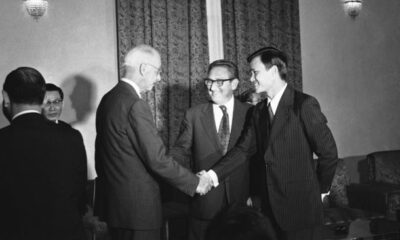

Striving for a Lasting Peace The Paris Accords and Aftermath
-


Thinking through Ecological Damage and Forced Displacement with Vietnamese American Literary Studies
-


Love Found and Lost: The Kim Vui’s Story (Book Review)
-
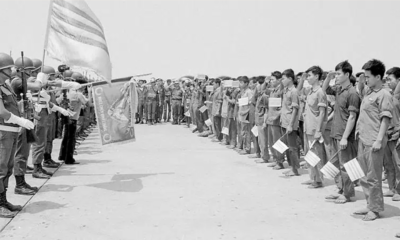

Upcoming Event: 5/10/23 Hidden Histories: The South Vietnamese Side of the Vietnam War
-
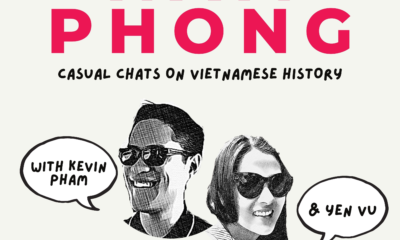

Nam Phong Dialogues: Episode 14 Vietnamese Anticommunism
-
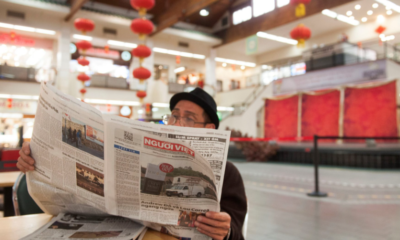

Depression in the Elderly Population of the Vietnamese Community in Orange County, California Part 2/3

Translation: The Decision in 2013 of the Central Committee of the Communist Party of China on Certain Major Issues Concerning Comprehensively Deepening Reform

Thủ Đức Demonstration High School: A Modern Educational Policy and Teaching Method of the Republic of Vietnam

Southeast Asia falls into China’s Trans-Asian Railway Network

A Proposed Outline for a Study on Republicanism in Modern Vietnamese History

Tran Le Xuan – Diplomatic Letters

Vietnam’s unresolved leadership question

Rethinking History and News Media in South Vietnam

“The Vietnam War Was an Unwinnable War”: On Factuality and Orthodoxy

Democracy in action: The 1970 Senatorial elections in the Republic of Vietnam (Part 1)

Pandemics and Morality: Lessons from Hanoi
US-VIETNAM REVIEW
-
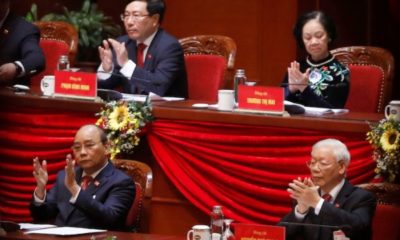
 Politics & Economy4 years ago
Politics & Economy4 years agoVietnam’s unresolved leadership question
-
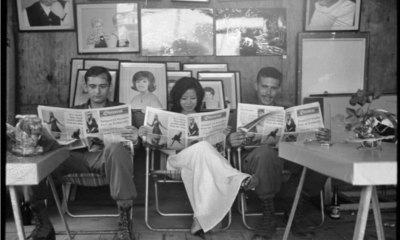
 Politics & Economy2 years ago
Politics & Economy2 years agoRethinking History and News Media in South Vietnam
-
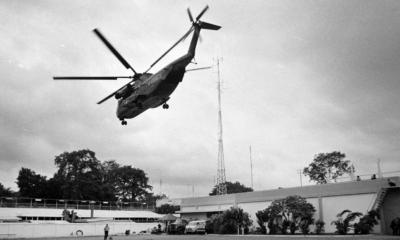
 After 19751 year ago
After 19751 year ago“The Vietnam War Was an Unwinnable War”: On Factuality and Orthodoxy
-
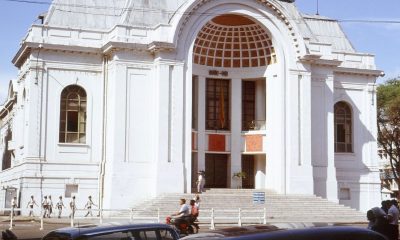
 ARCHIVES5 years ago
ARCHIVES5 years agoDemocracy in action: The 1970 Senatorial elections in the Republic of Vietnam (Part 1)
-

 Society & Culture5 years ago
Society & Culture5 years agoPandemics and Morality: Lessons from Hanoi
-

 Politics & Economy4 years ago
Politics & Economy4 years agoThe Limit to U.S.-Vietnam Security Cooperation
-
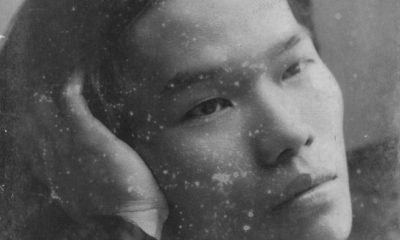
 Politics & Economy5 years ago
Politics & Economy5 years agoNational Shame: How We (Americans) can learn from Nguyễn An Ninh
-
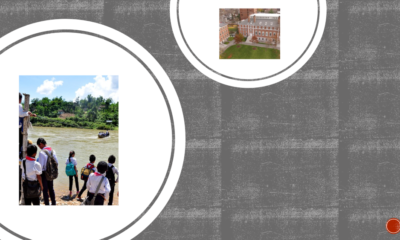
 Politics & Economy4 years ago
Politics & Economy4 years agoUS-Vietnam Partnership must Prioritize Vietnamese Education

